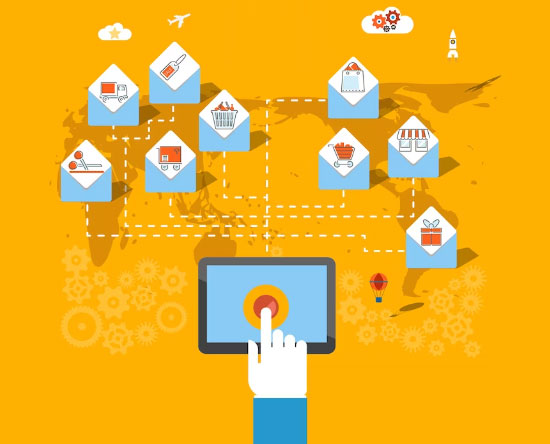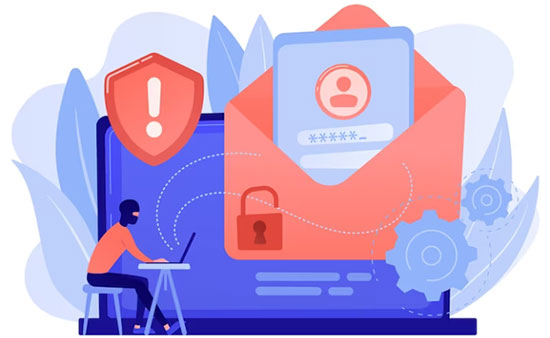Email marketing is a powerful tool for businesses of all sizes, but it requires strategy and precision to be effective.
One of the most critical aspects of successful email marketing is segmentation, i.e., dividing your email list based on specific characteristics. By doing this, you can tailor your messages to each group and increase the likelihood of engagement and conversions.
However, many businesses struggle with segmentation because they need to figure out where to start or are unsure how to segment their audience effectively.
In this blog post, we’ll provide a guide to segmentation for email marketing, including why it’s important, how to segment your audience, and some best practices for successful segmentation.
What is Email Marketing Segmentation?
Email marketing segmentation divides an email list into smaller groups or segments based on shared characteristics or behaviors. The purpose of segmentation is to tailor relevant content, increasing the effectiveness of the email marketing campaign.
There are various ways to segment an email list, such as by demographics (e.g., age, gender, location), psychographics (e.g., interests, values), behaviors (e.g., past purchase history, website browsing activity), and more.
By segmenting an email list, you can create targeted and personalized email campaigns more likely to resonate with subscribers and drive engagement and conversions. For example, a clothing retailer might segment its email list by gender and send different promotions to men and women or by past purchase history and send personalized product recommendations to customers who have previously bought certain items.
Importance of Email Marketing Segmentation
Email marketing segmentation is important because it allows you to divide your email list into smaller groups based on specific criteria such as demographics, behavior, or interests. By doing this, you can send targeted and relevant messages to each group, increasing the likelihood of engagement and conversion.
Segmentation lets you personalize your emails and create meaningful connections with your audience, improving brand loyalty and customer retention. It also helps to optimize your email marketing campaigns by providing valuable insights into what types of content resonate best with each segment, allowing you to refine your strategy and improve overall performance.
Types of Segmentation
1. Demographic segmentation
Demographic segmentation divides a larger group of consumers into smaller subgroups based on demographic variables such as age, gender, income, education, occupation, and marital status.
This segmentation type helps you understand each subgroup’s unique needs and preferences and develop targeted marketing strategies and products that meet their needs.
For example, a business may target a specific age group or gender with a product or service that appeals to their unique preferences and lifestyles.
Demographic segmentation is widely used because it allows businesses to tailor their marketing efforts to specific customer groups, increasing customer satisfaction and revenue.
2. Geographic segmentation
Geographic segmentation divides a market into smaller subgroups based on geographic location. This can be done based on geographic factors such as region, city size, climate, and population density.
By understanding customers’ specific needs, interests, and behaviors in different geographic locations, you can tailor your marketing efforts and products to meet those needs.
For example, a company selling winter clothes might focus its marketing efforts on regions with colder climates, while a company selling beach gear might focus on coastal areas.
3. Psychographic segmentation
Psychographic segmentation divides consumers into groups based on their psychological characteristics, such as personality, lifestyle, values, interests, and attitudes.
It helps businesses like yours to understand their target audience’s motivations, beliefs, and behaviors to tailor their marketing efforts better to meet their needs. Psychographic segmentation is often combined with other segmentation methods to create a more detailed and accurate customer profile.
By using psychographic segmentation, businesses can create more effective marketing strategies, target specific customer needs, and differentiate themselves from their competitors by appealing to their unique needs and desires.
4. Behavioral segmentation
Behavioral segmentation is based on customers’ behaviors, such as usage rate, loyalty, buying behavior, and benefits sought. This type of segmentation focuses on understanding how customers interact with a product or service, their buying patterns, and what motivates them to purchase.
By analyzing these behaviors, companies can develop targeted marketing campaigns and tailor their products or services better to meet the needs and preferences of their customers.
For example, a company may segment its market based on usage rate, targeting heavy users with loyalty programs or special promotions while encouraging light users to increase their usage through personalized marketing messages.
5. Technographic segmentation
Technographic segmentation classifies consumers based on their technology preferences and behavior. It involves analyzing customers’ use of technology, such as their devices, online platforms, and software, to gain insights into their communication and buying habits.
This helps businesses create targeted marketing campaigns that are personalized to specific audience segments. Technographic segmentation can also help companies tailor their product offerings and customer service to meet the needs of tech-savvy consumers.
Companies can improve customer engagement and build stronger relationships with their audience by understanding customers’ technological preferences.
Benefits of Email Marketing Segmentation
1. Improved relevance
Email marketing segmentation allows you to target specific groups of customers with content that is most relevant to them. By sending more targeted and personalized emails, you can increase the relevance of your messages and improve the likelihood that your customers will engage with them.
2. Higher open rates
When you send more targeted and relevant emails, you can expect to see higher open rates. This is because your customers are likelier to open and read emails about their interests and needs.
3. Increased click-through rates
By sending targeted emails, you can increase the likelihood that your customers will click on links within your emails. This can lead to increased traffic to your website, more sales, and other conversions.
4. Better customer relationships
Email marketing segmentation allows you to send personalized messages to your customers, which can help build stronger relationships. When your customers feel like you understand their needs and interests, they are more likely to feel loyal to your brand and continue to do business with you.
5. Higher ROI
By targeting specific groups of customers with relevant and personalized messages, you can increase the effectiveness of your email marketing campaigns. This can lead to higher ROI and a better return on your marketing investment.
Tips for Effective Email Marketing Segmentation
1. Collect accurate data
You need accurate data about your subscribers to segment your email list effectively. This includes demographic data such as age, gender, location, and interests and behavioral data such as past purchases, email opens, and clicks. Make sure you collect this data and keep it up to date.
2. Use email marketing software.
Email marketing software can make segmenting your email list and sending targeted messages easier. Look for software that allows you to segment your list based on various criteria and offers automation features to streamline your campaigns.
3. Test and optimize
You must continually test and optimize your messages to get the most out of your email marketing campaigns. This includes testing different subject lines, email designs, and calls-to-action, tracking your open and click-through rates, and adjusting your segmentation strategy accordingly.
4. Personalize your emails
Personalization is critical to effective email marketing segmentation. Use the data you’ve collected about your subscribers to personalize your messages, such as addressing them by name or recommending products based on their past purchases. This can help increase engagement and conversions.
Challenges of Email Marketing Segmentation
1. Data quality
Email marketing segmentation requires accurate and up-to-date data about your subscribers. If your data is incomplete or incorrect, it can lead to ineffective segmentation and poor results. Ensuring data quality requires ongoing monitoring and maintenance, which can be time-consuming and challenging.
2. Data management
Email marketing segmentation can involve managing large amounts of data, which can be challenging for some businesses. This includes collecting, organizing, and analyzing data and integrating it with other marketing systems and platforms.
3. Privacy concerns
As data privacy laws become increasingly strict, businesses must be careful about collecting and using customer data. This includes obtaining consent for data collection and use, protecting customer data from unauthorized access, and allowing customers to control their data. Failure to comply with data privacy regulations can result in legal and reputational consequences.
Conclusion
Segmentation is a crucial aspect of email marketing that allows businesses to send more targeted and personalized messages to their subscribers.
By segmenting your email list, you can improve the relevance of your messages, increase engagement and conversions, and build stronger customer relationships. However, effective segmentation requires accurate and up-to-date data, proper data management, and compliance with data privacy regulations.
By following the tips outlined in this guide and staying on top of the latest best practices, businesses can maximize the benefits of email marketing segmentation and drive better results from their campaigns.























